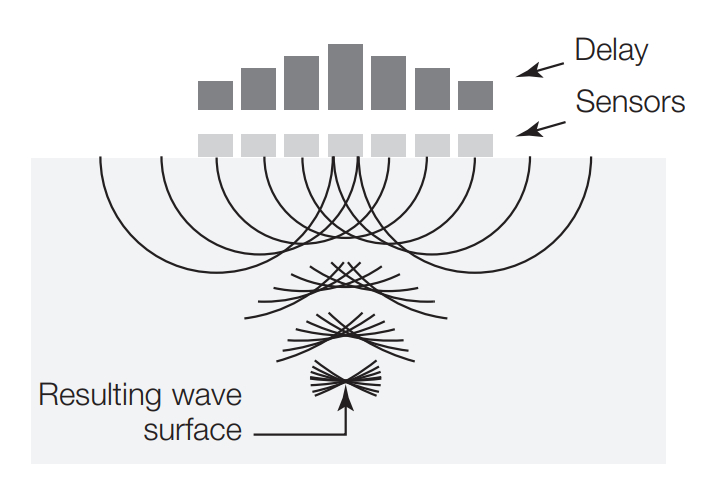Focal Laws
Minimally, a focal law can control, for each element, the activation in TX, delay in TX, activation in RX, delay in RX, and apodization (gain) in RX. The delays are typically from a few tens to a few thousands of nanoseconds (ns). The multi-element system will round (quantize) each delay with a resolution of 2.5 ns, which is generally good to probes up to 15 MHz. The finer the quantization of delays, the better the focusing. But couplant and other unknowns are causing a small impact on the actual quality of the focusing.
It is the part of the focal law which concerns delays in TX and in RX. A focal law is often presented under the shape of a centered or off-centered hyperbolic histogram. We can interpret this hyperbole like an electronic lens with a variable concavity, depending of the focusing depth. The idea is to generate a wave front that will propagate and possibly focus at the focal point.

